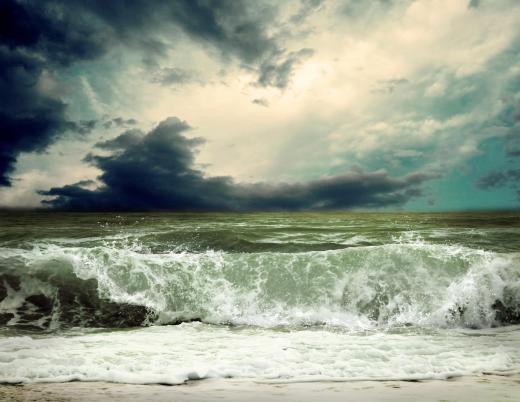What Is Coastal Engineering?
 Mary McMahon
Mary McMahon
Coastal engineering approaches structural and environmental engineering issues along coastlines, where constant wave action creates a dynamic setting. It blends an understanding of oceanography and the processes behind shoreline formation with engineering, the study of building and maintaining structures in a variety of environments. People in this field can work on activities like securing ports, rehabilitating shorelines, and constructing buildings that will be able to withstand harsh conditions near the shore. They may work for government agencies, educational institutions, nonprofits, and private companies.
A thorough understanding of coastlines is important for this discipline. Practitioners need to know how the ocean acts on the surrounding environment, and how the outlying ocean floor can affect wave activity, including storm surge, tsunamis, and other abnormal events. They also study geology and surrounding land forms to track the process of erosion and collect data on coastal sites. This information can be important whether engineers are preparing to protect a beach so people can use it for creation or getting ready to build a port.

Environmental issues are a topic of interest in coastal engineering. People may be concerned with preserving the natural environment for human enjoyment, which can include rehabilitating polluted or damaged coastline. Real estate values can be a subject of attention in areas where erosion eats away the coastline near homes, requiring protective structures to insulate buildings and roads from damage. Coastal engineers study environments carefully to determine the best measures to take.

Navigation is another area of key importance. Engineers work to keep coastal waters navigable, which can include dredging channels, cutting trenches, and maintaining harbor and port facilities. They may reshape part of the coastline to create an artificial harbor, which can require additional protective walls and other structures to retain the new shape. Coastal engineering work can require considering needs like commerce and efficiency in the development of facilities.

The ability to shape and control coastlines has been important to a number of human civilizations for thousands of years. Archaeological evidence indicates that coastal engineering may be among the oldest of the engineering disciplines, as seagoing societies often made changes to their coastlines to improve safety and navigability. These included installing jetties for docking, using seawalls to control waves, and digging out beaches to create harbors to protect ships from high seas and provide an environment for offloading both goods and people. Some relics of early coastal engineering efforts can be seen in parts of China and the Mediterranean Sea.
AS FEATURED ON:
AS FEATURED ON:














Discuss this Article
Post your comments